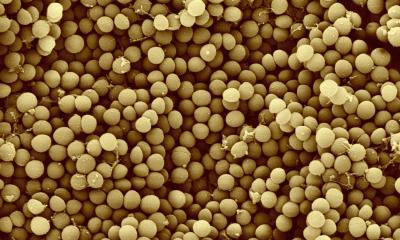Superantigens could be behind several illnesses
Superantigens, the toxins produced by staphylococcus bacteria, are more complex than previously believed, reveals a team of researchers from the University of Gothenburg in an article published today in the scientific journal Nature Communications. Their discovery shows that the body’s immune system can cause more illnesses than realised.

“Superantigens have a real talent for disrupting the body’s immune system,” says Karin Lindkvist from the University of Gothenburg’s Department of Cell- and Molecular Biology, one of the authors of the article. “If you’re infected with bacteria that secrete superantigens, your immune system will respond so strongly that it’ll make you ill. Our study shows that superantigens activate the immune system in more ways than previously thought.”
We are all exposed daily to various types of foreign organism that can harm us. The human body has therefore developed cells whose role it is to “kill” and remove all foreign invaders that find their way in – the immune system.
Antibiotic-resistant bacteria have become increasingly common with the more widespread use of different types of antibiotics. Yellow staphylococci (Staphylococcus aureus) are one of the most common bacteria in the world around us, with most children and adults carrying them at some point. One strain, MRSA (methicillin-resistant Staphylococcus aureus), has developed resistance to penicillin and other penicillin-like antibiotics that are normally used to treat infections caused by staphylococci. Staphylococci can cause a variety of conditions such as long-term wound infections and abscesses, and can also lead to food poisoning.
The toxins produced by staphylococci are also known as superantigens. A normal viral infection will trigger the activation of around 0.0001% of the body’s natural killer cells (T cells), which is enough to destroy the virus. However, contracting bacteria that secrete superantigens leads to the activation of 5-20% of the body’s T cells. Such a strong immune response will often result in illness, which generally involves fever and extreme nausea. Superantigens are also well-known for causing toxic symptoms, as in toxic shock syndrome. There is also some speculation as to whether superantigens can cause autoimmune disorders such as rheumatoid arthritis.
“By investigating how superantigens activate the immune system via its T cells, we’ve been able to show that they bind to more than one part of the T cell receptor,” says Lindkvist. “This is an important discovery for our understanding of superantigens’ biological function, and for the future development of a vaccine against superantigens. We haven’t yet looked at whether other superantigens can activate T cells in the same complex way, but it’s reasonable to assume that they can.”
In addition to Karin Lindkvist, the research team behind the discovery comprises Maria Saline, Karin Rödström, Gerhard Fischer, Vladislav Orekhov and Göran Karlsson, all from the University of Gothenburg.
The study "The structure of superantigen complexed with TCR and MHC" reveals novel insights into superantigenic T cell activation has been published in the scientific journal Nature Communications.
30.11.2010










